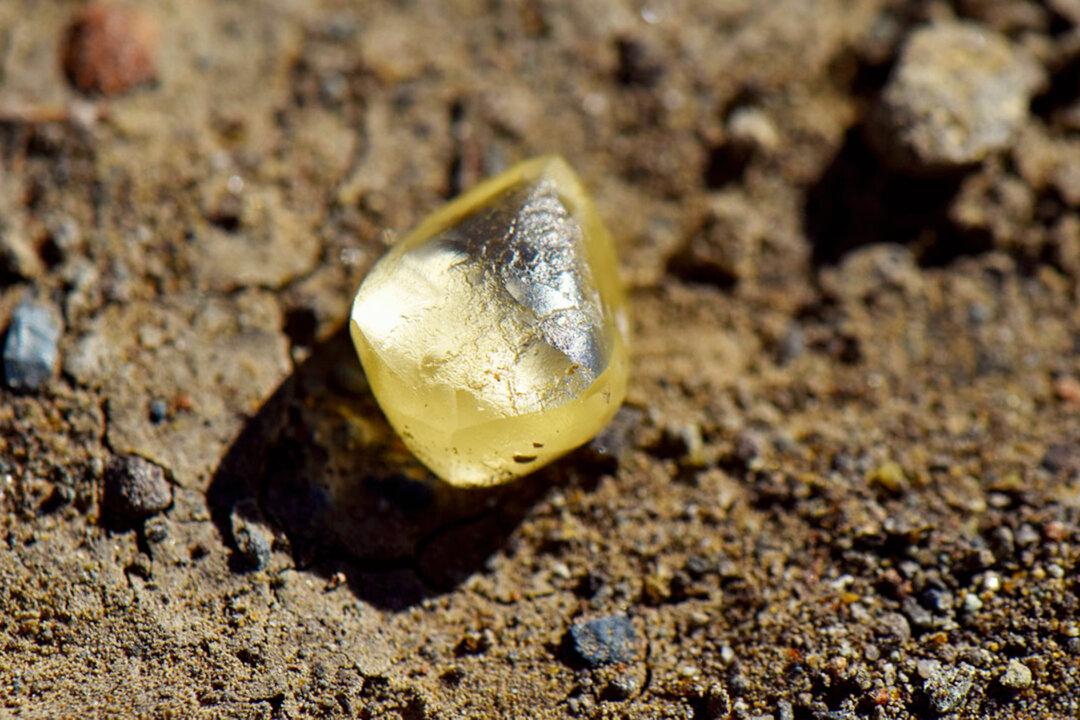A retired California couple struck paydirt while visiting Crater of Diamonds State Park in Arkansas late last month when the soil yielded the visitors a large, pear-shaped yellow diamond.
Noreen Wredberg and her husband Michael from Granite Bay spend much of their time traveling to national parks in the United States; and found themselves at Crater of Diamonds on Sept. 23, while they were visiting nearby Hot Springs National Park—the trip turned out to be more than worthwhile.






